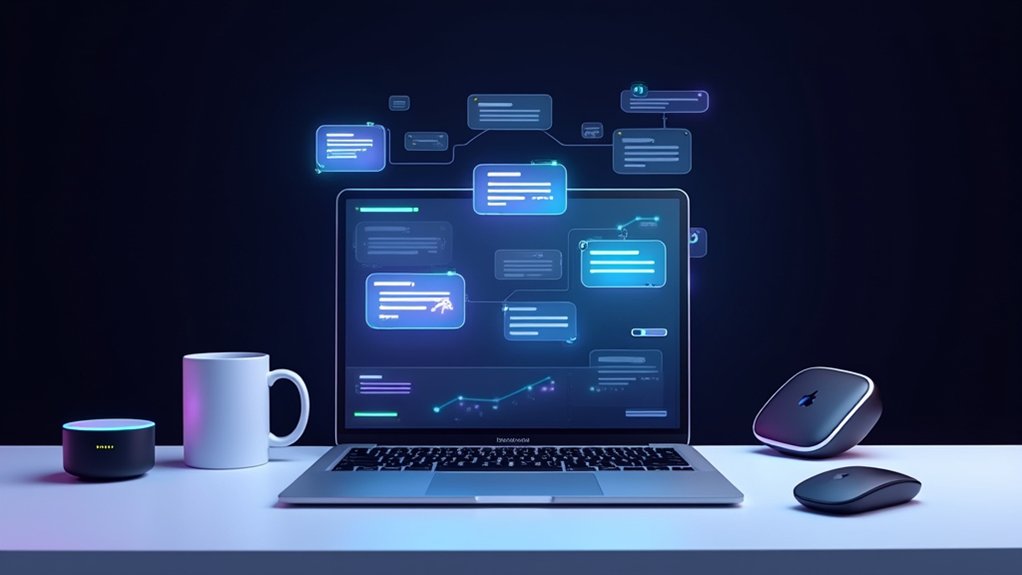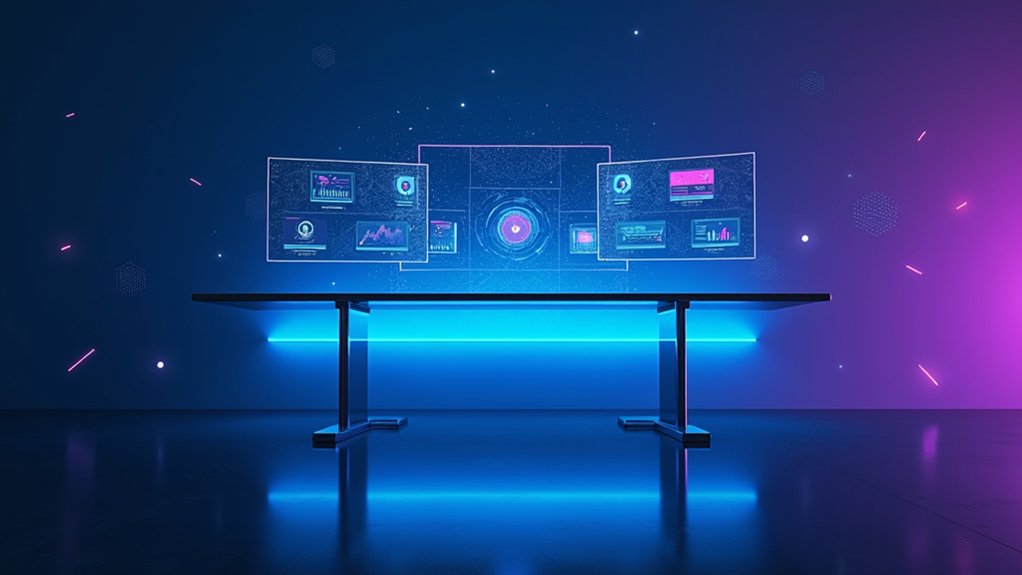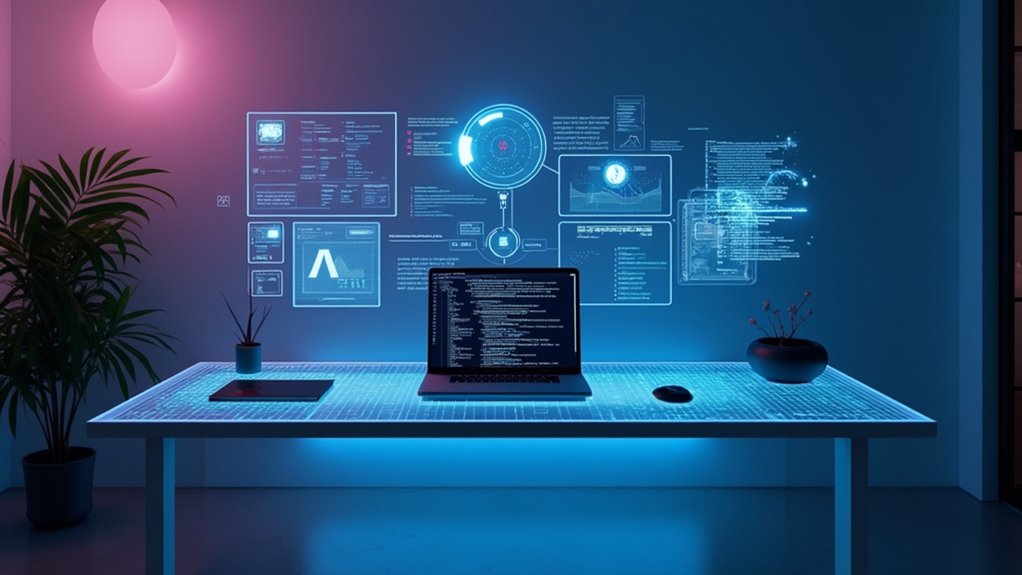AI-powered tools are revolutionizing solo entrepreneurship, turning one-person operations into powerhouses. Modern platforms like Wrike and Asana predict project disasters before they happen, while virtual assistants handle everything from customer service to content creation. The days of drowning in tasks and mainlining coffee are over – one entrepreneur can now accomplish the work of 3-4 people. But that’s just scratching the surface of what these digital wizards can do.

Juggling a one-person business used to mean drowning in tasks, living on caffeine, and praying nothing falls through the cracks. Not anymore. AI has swooped in like a digital superhero, transforming how solopreneurs manage their daily chaos.
Today’s AI tools are basically like having a small army of virtual assistants, minus the awkward water cooler conversations. Platforms like Todoist, Trello, and Motion have revolutionized how solo entrepreneurs handle their workflow. These systems don’t just organize tasks – they learn from work patterns and take over the mind-numbing routine stuff that used to eat up precious hours. Solo founders can now achieve productivity equivalent to 3-4 full-time employees with AI assistance.
AI tools are the virtual workforce solopreneurs always needed – organizing, learning, and crushing mundane tasks without the office drama.
The real game-changer is how AI predicts potential project disasters before they happen. Tools like Wrike and Asana act like crystal balls, spotting red flags while there’s still time to dodge bullets. They’ll even suggest productivity tweaks based on individual work habits. Because let’s face it, everyone’s version of organized chaos is different. Asana’s AI capabilities help solopreneurs with task prioritization for smoother workflow management.
Content creation, once a time-consuming nightmare, has become surprisingly manageable. Tools like Descript and Copy.ai pump out everything from blog posts to marketing copy, while Blaze AI helps maintain quality without requiring a clone of yourself. Machine learning algorithms now enable posting optimization for maximum social media engagement.
Meanwhile, customer interaction has gotten a major upgrade with platforms like Tidio handling initial customer conversations. No more missing important client messages at 3 AM.
The financial side of running a solo show has also gotten smarter. AI-powered systems track expenses, handle invoicing, and chase down payments – all without breaking a sweat or feeling awkward about it. They’ll even predict future cash flow, though they can’t guarantee you’ll like what they forecast.
Project planning has evolved from educated guessing to data-driven decision making. AI analyzes past performance, optimizes resource allocation, and keeps projects from spiraling out of control.
It’s like having a really smart friend who remembers everything and isn’t afraid to tell you when you’re taking on too much. Welcome to the future of one-person teams – where AI handles the heavy lifting while humans focus on actually running their business.
Frequently Asked Questions
How Much Technical Knowledge Is Required to Implement AI Project Management Tools?
Implementing AI project management tools requires surprisingly minimal technical expertise.
Most platforms feature user-friendly interfaces and guided setup processes. Basic project management knowledge and familiarity with standard integrations (like calendar sync) is usually enough.
Sure, advanced customization might need more skills – but that’s optional. The real kicker? Even technophobes can get started with built-in tutorials and templates.
No coding required, unless you’re feeling fancy.
Can AI Project Management Tools Integrate With Existing Productivity Apps?
Modern AI project management tools play nice with pretty much everything.
They hook right into Google Workspace, Microsoft 365, and hundreds of other apps people use daily. Through APIs and pre-built integrations, these tools sync data automatically across platforms – no manual copying needed. Changes made in one place show up everywhere else instantly.
Plus, with Zapier support, they can connect to thousands more apps. It’s basically one big happy tech family.
What Happens to My Project Data if the AI Service Provider Shuts Down?
When an AI service provider shuts down, users can face total data loss – brutal but true. Without proper backups, their precious project data vanishes into the digital void. Poof. Gone.
Regular exports to independent storage are critical. Even with exports, some data might end up in weird, barely usable formats. The harsh reality? Service providers can pull the plug anytime.
Smart teams maintain parallel documentation systems and don’t put all their eggs in one AI basket.
Are There Free AI Project Management Tools Suitable for Beginners?
Yes, several solid free options exist for project management newbies.
Notion AI and Height offer generous free plans with AI features already baked in – no fancy upgrades needed.
Trello’s free version includes Butler automation, while Taskade keeps things simple with basic AI tools.
ClickUp’s free tier packs AI summaries and templates, though it might feel like drinking from a fire hose for total beginners.
Asana’s straightforward interface won’t make your brain explode.
How Secure Are AI Project Management Platforms for Sensitive Business Information?
Security on AI project management platforms is honestly a mixed bag.
While top platforms offer solid features like TLS encryption and SAML-based authentication, risks still exist. Data breaches happen. Period.
Some platforms let users choose between OpenAI or more private open-source options – that’s nice.
Real-time monitoring and threat detection help, but here’s the truth: no system is 100% secure.
Teams must weigh convenience against potential data exposure.





